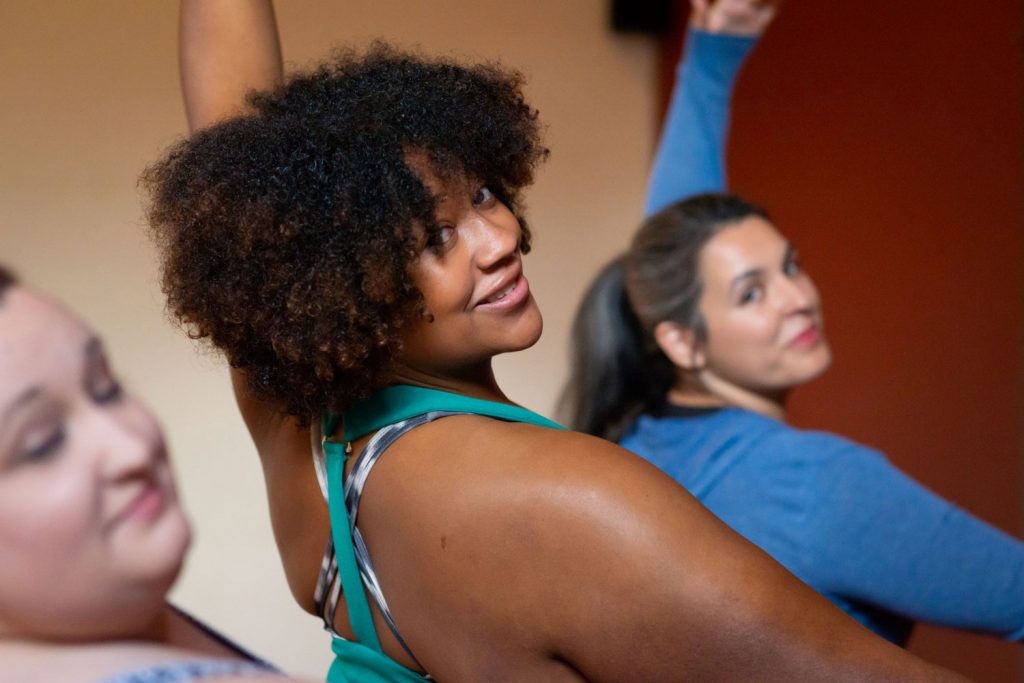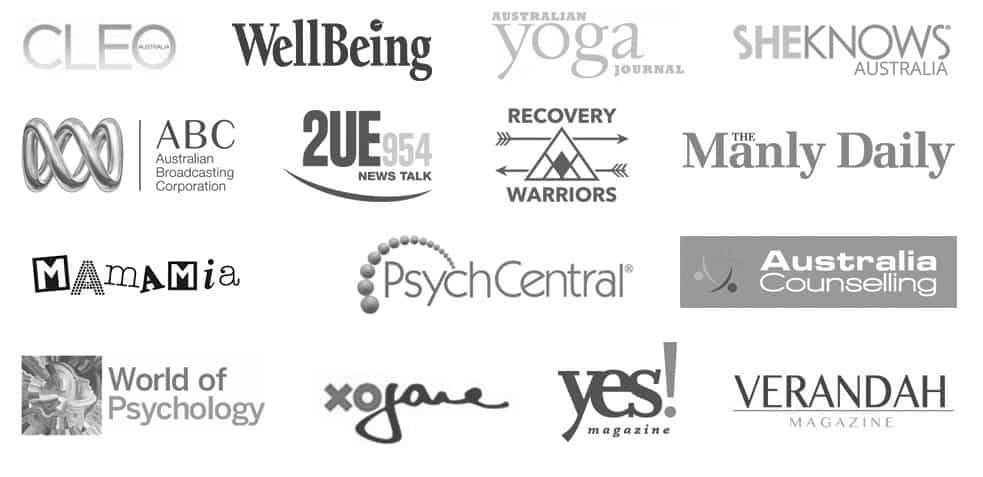
As a little girl, Alice loved to dance. No matter whether there was music and an audience, or just a sidewalk or field, Alice would swoop and swirl, letting her arms sail wildly through the air, feet moving in a rhythm that came to her with each moment, twirling until she was dizzy only to fling herself to the grass and laugh out loud.
As adults, how many of us feel that same impulsive joy in dancing and movement? How many of us feel that spontaneous rhythm that compels us to let our feet lead and fling our arms wide as if we could fly?
With each year we spend on the planet, we absorb messages about our maturing bodies, and often those messages are centred in shame. Feeling shame about our bodies can prevent us both from moving, dancing and from finding pleasure in our bodies.
Part of my own recovery from early childhood trauma, early childhood emotional neglect and the resultant yo yo dieting, emotional eating and body image concerns has been to engage in dance and movement therapy at women’s retreats or classes where embodiment through movement is included in the program. Following a Health at Every Size® approach, dancing is for every shape and sized body.
The benefits of dancing impact us on the physiological, emotional, psychosocial, psychological, neurological and spiritual levels of our being. It can help us to develop an enhanced sense of self-awareness and facilitates us to get in touch with the deeper and unknown parts of ourselves. It is a wonderful form of self-expression and can be used to release painful feelings and traumas that have been somatised in the body.
HERE ARE MY TOP 5 DANCE AND MOVEMENT THERAPY CLASSES
Dancing helps us come back to our bodies: Nia® Practice
Nia® is inspired by the martial arts, dance arts and healing arts, Nia is a transformational movement and lifestyle practice anchored in body-centred awareness.
Nia Australia
Nia Now says that Nia is not just a workout, it is a holistic fitness practice, which combines dance, martial arts and mindfulness. It tones your body while transforming your mind. Nia addresses each aspect of your psyche: body, mind and soul.
Dancing helps us rediscover joy in our bodies: No Lights No Lycra
If you can dance and be free and not embarrassed you can rule the world.
Amy Poehler, Yes Please
No Lights No Lycra is a free form dance class in the dark. There are no teachers, no mirrors, just pure unadulterated dancing.
No Lights No Lycra started in Melbourne, Australia. It was launched to the song Rien de Rien by Edith Piath. The dance night grew through word of mouth and within a few months the hall was full of people who shared the same yearning for a dimly lit space to dance as freely as they do in their living rooms.
If you want to dance like no one is watching, No Lights No Lycra now runs dance nights throughout Australia and the world.
Dancing helps us find community: Gabrielle Roth 5 Rhythms
5Rhythms is a dynamic movement practice – a practice of being in your body – that ignites creativity, connection, and community
5Rhythms
Each rhythm is interpreted in a uniquely personal way, opening you up to a new sense of freedom and possibility that is both surprising and healing, exhilarating as well as deeply restorative. It is, in essence, “exercise for the right brain.”
When you practice 5Rhythms, you learn to creatively express aggressiveness and vulnerability, emotions and anxieties, edges and ecstasies. It reconnects you to cycles of birth & death and hooks you into humanity and the spirit of all living things. Within the group context you create connection and community and hone your instincts and your intuitions. 5 Rhythms are made up of all walks of life – every culture, religion, race, gender, age and sexual preference are welcome.
Dancing helps us find our wildness: QOYA
In QOYA, we remember our essence is wise, wild, and free.
Rochelle Schieck
Wise, wild and free also draw reference to the movement forms that QOYA entails:
- Wise: the wisdom of yoga
- Wild: the creative expression in dance
- Free: expanding your capacity to enjoy your body through sensual movement
If you are seeking answers to important life questions, you will find the answers in your body.
In every QOYA class, there is a theme which will support the embodiment of your feminine essence. It includes engaging in ritual, pilgrimage, and community connections to open your heart, mind, and spirit.
Dancing helps us recover from trauma: Movement Therapy
When you experience trauma, one common response is dissociation; you space out, split off and often feel disconnected from your body.
Embodiment through movement can bring you back home to your body. A particularly effective way to do so is through dance therapy, also known as movement therapy. In dance / movement therapy, movement is used as a therapeutic tool.
According to Licensed Clinical Social Worker Greta Gleissner, dance / movement therapy,
is the psychotherapeutic use of movement and dance to support the intellectual, emotional, and motor functions of the body. As a form of expressive therapy, Dance Movement Therapy looks at the correlation between movement and emotion.
Dance / movement therapy can help to improve body image concerns, build self-esteem, reduce stress, help you to regulate your emotions and improve your relationships.
Dancing helps us befriend our bodies
Do you want to transform your relationship with food, body & soul®? Start here by clicking on the link for a copy of my free eBook, 4 Ways to Befriend Your Body.

Leave a Reply